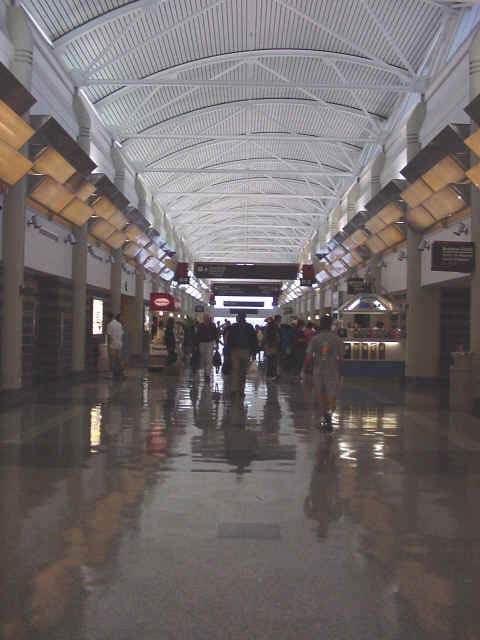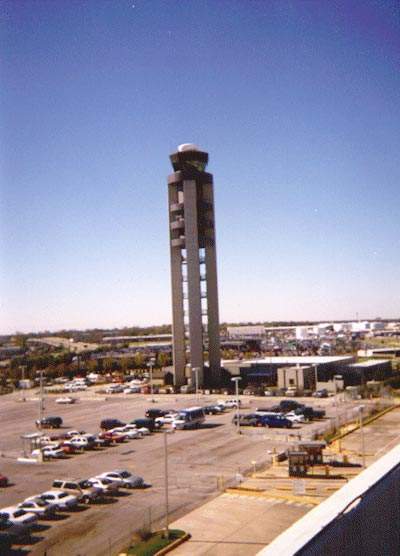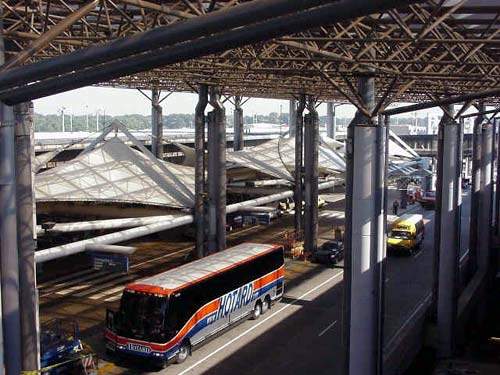Louis Armstrong New Orleans International Airport decided in 2001 to increase its capital improvements programme budget from $850 million to more than $1 billion.
The new programme included additional improvements at the airport that are currently under construction. These include road improvements for access and traffic management, the enhancement of adjacent levees to mitigate against floods, such as seen in the aftermath of the September 2005 Hurricane Katrina emergency, and major runway rehabilitation and resurfacing.
DAMAGE FROM HURRICANE KATRINA
The airport was closed for Hurricane Katrina on 28 August 2005, during which it sustained $55 million to $56 million in damage. A hole in the roof over C concourse is a striking sign of Katrina’s power. Other damage to the airport’s roof showed metal so twisted that it resembles plastic sheeting.
The airport received a $15.2 million federal grant that will be used to help repairs.
Prior to Katrina, the airport had 10 million passengers going in and out of the airport each year with 174 departures a day. The airport authority estimates that passenger levels could reach 6 million to 8 million by the end of 2006, with up to 130 flightsa day. Normal passenger numbers (more than 10 million) might have to wait until 2007.
AIR TRAFFIC CONTROL SYSTEMS
In July 2005 the airport started the upgrade of its Air Traffic Control (ATC) systems. The airport has installed new computerised terminals in the TRACON (Terminal Radar Approach Control facility), which has authority over air traffic in Southeast Louisiana, as well as in the control tower, 200ft above the building.
The controllers in the TRACON work to maintain separation of aircraft in transit and to help them avoid severe weather. The new system, called STARS (Standard Terminal Automation Replacement System), can see weather patterns and determine their intensity as well.
In the rare event of the airport’s main radar system failing, controllers can instantly switch to radar systems in Slidell, Alexandria or Baton Rouge, giving them a range of up to 250 miles from the airport.
The new system has much more flexibility and processing power than previously, allowing a larger number of aircraft to be tracked and increasing safety standards. The FAA, which runs the national air traffic control system, has spent $1.4 billion so far to develop and deploy the system. 36 airports nationwide have the STARS systems in operation.
AIRPORT REHABILITATION
In February 2005, the airport started a major runway rehabilitation project, including flood protection improvements, on the east-west runway. Runway 10-28 was closed for a team, led by Boh Brothers Construction Company, to start the nine-month, $64 million project.
The project comprised the removal of the existing pavement, repair and replacement of damaged and deteriorated sections and the installation of a concrete overlay. The project also included restoring pavement beyond the runway ends, improving lighting systems and rehabilitating connector taxiways.
The FAA committed more than $17 million in Federal grants to support the project. Bonds sponsored by airport revenues will pay the remaining cost of the project. While the east-west runway is closed, all aircraft operations will use runway 1-19, the north-south runway.
IMPROVED HURRICANE PROTECTION
The rehabilitation project also included enhanced high water protection for Jefferson and St. Charles Parishes. Portions of the East Jefferson Levee are being raised nearly 6ft, exceeding design standards. A $5 million floodgate is also to be installed to close the last gap in the Pontchartrain Levee District (St. Charles Parish) lake levee hurricane protection system. This should mean that Airline Drive (US 61) will no longer have to be closed and sandbagged as lake waters rise during storm events, as has happened in the past.
In addition, the East Jefferson Levee District was the recipient of the broken concrete and ground asphalt from the demolition of the old runway surface. This material, valued at $3 million, was used to begin a much needed shoreline protection project along the Lake Pontchartrain shoreline.
The levee projects were due to be completed in the fall of 2005. Hurricane Katrina intervened before this could happen but the work carried out did help, and when these projects are finally finished they will help protect against storms in the future.
NEW ORLEANS AVIATION BOARD
The airport is governed by the New Orleans Aviation Board, which was created in 1943 to oversee the administration, operation and maintenance of the airport. The board make all decisions regarding the $1 billion rebuilding, renovation and expansion program which began in 1994.
The board had hoped to undertake extended projects aimed at increasing the economic status of New Orleans by bringing more business to the airport, the city of New Orleans and the Gulf South in general. In addition to repairs this is now needed more than ever.
Talks have also been held into the possibility of spending up to $8 billion on the construction of a new airport further from the city in the parish of Bonnet Carré (this had been shelved prior to Hurricane Katrina).








